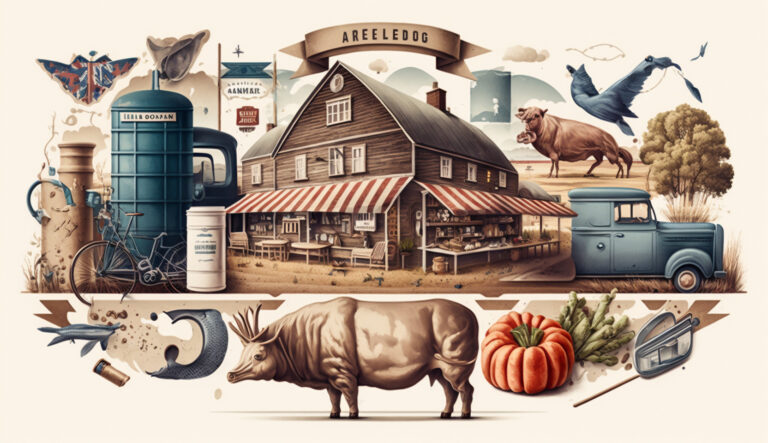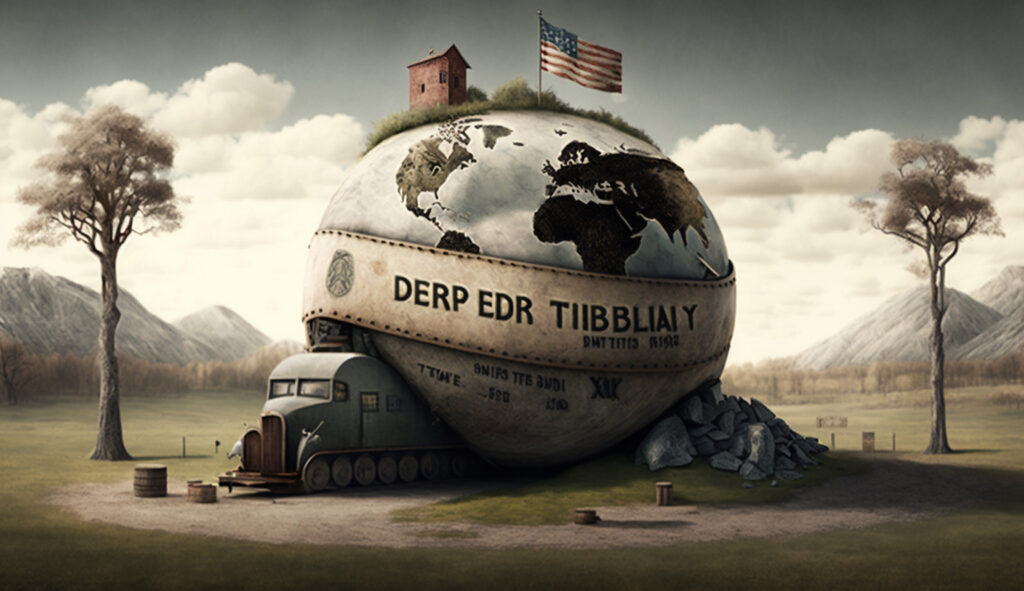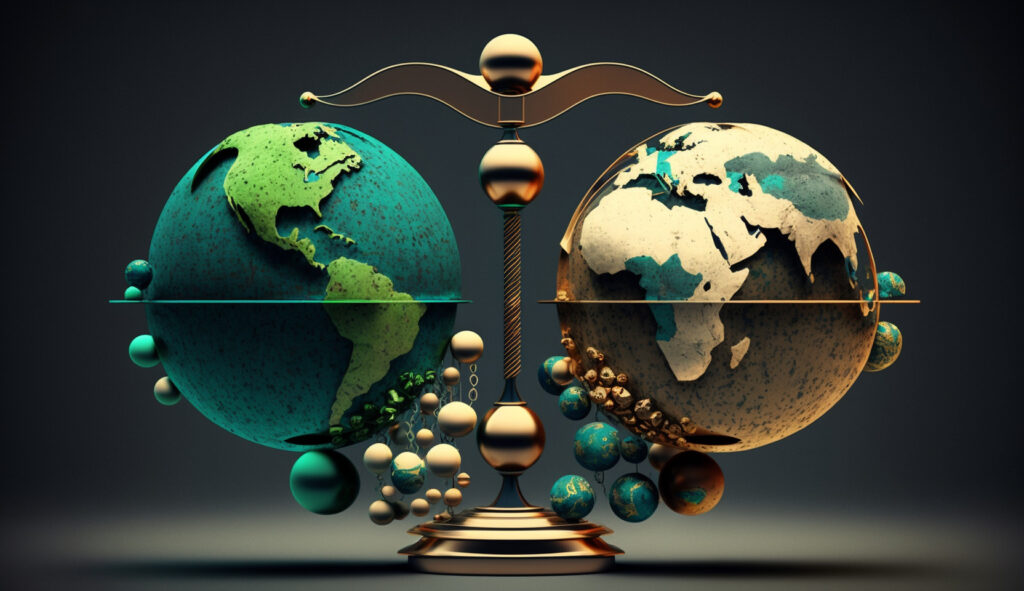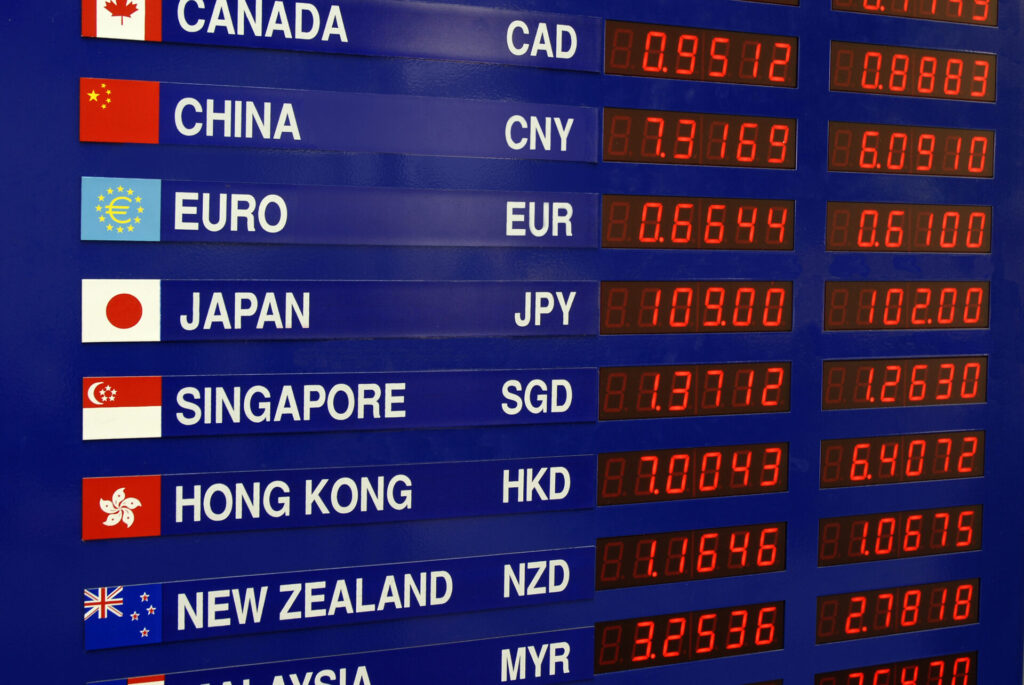
Understanding the Gross Domestic Product (GDP) is essential to gauge the health of a country’s economy. But it’s not just about quantity; quality, sustainability, and fair distribution also matter. In our today’s article, we explore the concept of GDP, its limitations, and the need for additional measures to paint a complete picture of a nation’s economic health. Together, these narratives underline the importance of a holistic approach to economic assessment that incorporates factors beyond GDP, such as the Human Development Index (HDI) and the Genuine Progress Indicator (GPI).
Gross Domestic Product (GDP): It’s Like a Report Card for a Country’s Economy
So, you’ve probably heard the term GDP. It’s short for Gross Domestic Product. Think of it as a giant magnifying glass. It lets us zoom in on a country’s economic activity for a specific period, usually a year. Let’s say we could put a price tag on everything a country makes and every service it provides within its own borders during a specific time. That’s what GDP does – it adds up the value of these goods and services. So, it gives us a clear picture of a country’s economic health in numbers.
How Do We Crunch These Numbers?
Well, economists use three main methods to calculate GDP: the production approach (Value-Added Approach), the income approach, and the expenditure approach.
The Production Approach: This approach starts by measuring the total value of goods and services a country produces. But then, we must subtract the value of any goods or services used during production. We call that intermediate consumption. By doing this, we get the GDP from the production side of things.
Production = Gross Value of Output – Value of Intermediate Consumption
The Income Approach: On the other hand, the income approach focuses on the total income everyone earns within a country. This includes workers’ wages, businesses’ profits, landlords’ rents, and the taxes the government collects. After adding all these up, we subtract any subsidies the government hands out. And there you have it, the GDP from the income angle.
GDP = Total National Income + Net Foreign income + Sales Taxes + Depreciation
The Expenditure Approach: Finally, the expenditure approach checks how much money people, businesses, and the government spend on all final goods and services. It also considers the balance of exports and imports. We get this balance, called net exports, by subtracting the value of imports from exports.
GDP = C + I + G + NX
Among the three approaches the choice largely depends on the data availability and reliability in a particular country. However, the expenditure approach is often the most commonly used method, especially in many developed countries like the United States. This approach is relatively straightforward because it involves adding up all the money spent on goods and services produced within the country during a particular period.
What Are the Four Key Parts?
Now, let’s roll up our sleeves and break down the Expenditure Approach into its four main pieces: Consumption (C), Investment (I), Government Spending (G), and Net Exports (NX). Let’s dive right in and explore each of these components.
First and foremost, we’ve got consumption (C). It’s the kingpin, the largest piece of the GDP puzzle. This encompasses all the spending by people like you and me. We’re talking about money spent on goods like cars, food, clothes, and services like haircuts or home insurance. The way it works is when people spend, businesses earn. And when businesses earn, they can expand and hire more people, which keeps the economic wheel spinning.
Moving on to the next piece, we have investment (I). Don’t get confused; we’re not talking about your stock portfolio or your Dogecoin. We’re referring to what businesses spend on the physical stuff: machinery, buildings, equipment, and even their stored inventory. This type of investment is the fuel businesses need to grow and innovate. It’s a crucial driver for pushing the economy forward.
Third on the list is government spending (G). This includes all the moolah that local, state, and federal government entities shell out on goods and services. This considers government employees’ salaries, military spending, and large infrastructure projects like constructing roads and hospitals. However, payments like social security or unemployment benefits aren’t part of this because they’re not connected to the production of goods or services.
Last but not least, we reach net exports (NX). It’s all about the difference between what a country sells to other countries (exports) and what it buys from them (imports). If a country sells more than it buys, net exports add a boost to the GDP. On the other hand, if a country buys more than it sells, net exports will tug GDP downwards. This trade balance can give us some handy insights into a country’s position in the global economic playground.
So, there you have it, folks. When you tally it all up, GDP = C + I + G + NX. It’s the recipe for understanding a country’s economy. Each ingredient, be it consumption, investment, government spending, or net exports, adds its own unique flavor to how the economy is doing.
In a nutshell, getting the hang of GDP and its components is like having a GPS for the economy. Regardless of whether you’re an economist, a business owner, or just someone trying to untangle the economic news, understanding GDP can help you navigate the economic landscape.
What Are the Limitations?
While GDP is a robust tool for measuring the size and health of an economy, it doesn’t provide insights into every aspect of economic well-being. Therefore, when we rely on GDP to assess an economy’s performance, we must also consider other factors and indicators to get a comprehensive understanding.
However, it’s critical to remember that while GDP provides a broad overview, it doesn’t paint the whole picture. It doesn’t delve into how wealth is distributed among the population or indicate the quality of life. It also leaves out unreported economic activities, known as the informal economy. These activities can include anything from unreported cash jobs to unregistered businesses.
Even though GDP is a heavyweight champ in the world of economic indicators, it has some blind spots. Let’s dig into these limitations.
Firstly, it doesn’t consider non-monetary transactions. Say you trade your old guitar for your friend’s bicycle no money changed hands, right? That’s bartering, and it counts as economic activity. But since there’s no money involved, GDP doesn’t register it.
Secondly, GDP often misses what’s called the informal or “black” economy. This includes any cash-in-hand jobs, unregistered businesses, and even unlawful activities. GDP might not pick up these activities, which can lead to an underestimation of a country’s economic hustle and bustle.
Thirdly, it doesn’t take into account non-economic stuff that matters a lot to our well-being. Think of the time you spend chilling, the quality of our environment, how fair society is, or how educated people are. These things matter, but GDP calculations don’t consider them.
Fourth, it puts the spotlight on the quantity of goods and services, not their quality. So, a country might produce a ton of low-grade goods. This could inflate its GDP, but it doesn’t necessarily mean people live a high life or are satisfied with what they buy.
Moreover, GDP can’t tell us how the money is spread out in society. Imagine a country with a high GDP, but most of the wealth is in the hands of a few really wealthy individuals. GDP alone can’t clue us in on this income inequality.
Next, it turns a blind eye to negative side effects or “externalities” like pollution. These are the costs that hit people who aren’t directly involved in producing or consuming goods and services. For instance, a factory boom might beef up GDP, but if it’s belching out smog, it could mess with people’s quality of life.
Lastly, GDP doesn’t check whether economic growth can keep up the pace in the long run. A country might use all its natural resources to get a quick GDP boost, but this can hurt the economy.
So there you have it. While it is a big deal for sizing economic activity, it doesn’t give us the full story of a nation’s health and prosperity. It’s important, sure, but its limitations remind us that we must also check out other measures and indicators. They help us fully understand economic health, societal well-being, and sustainable development. Therefore, Policymakers and economists need to consider these factors alongside GDP to make smarter economic decisions.
Beyond GDP: Can We Get A Clearer Picture of Economic Health?
Even though all market participants carefully look at GDP, it’s not the only way to measure a country’s economic health. Indeed, there are other factors to consider as well.
Real GDP vs. Nominal GDP
First, let’s delve into the concepts of Real and Nominal GDP. Nominal GDP is the unadjusted, raw output of an economy. It simply counts everything a country produces without any frills. On the other hand, Real GDP is slightly different. What it does is it adjusts for inflation. Doing this allows us to compare a country’s economic performance over time without being thrown off by price changes. Consequently, a high Nominal GDP doesn’t always mean a country is producing more; the prices could merely be high.
GDP Per Capita
Moving on, there’s another term you should know – GDP per capita. It’s quite straightforward. You divide the GDP by the total population, and voila, you get the average economic output per person. This measure comes in handy when comparing living standards between countries. For instance, a country with a massive GDP may have a large population. Therefore, GDP per capita can give a more accurate picture of how the average person is doing economically.
The Human Element
Although GDP is a solid starting point, it doesn’t quite cover the human side of things. That’s where the Human Development Index (HDI) steps in. HDI, interestingly, ranks countries based on factors like life expectancy, education, and income per person. Doing so provides a view of the social aspects that GDP might overlook.
Sustainability and Progress
Some critics argue that we need to consider sustainability, and that’s where the Genuine Progress Indicator (GPI) comes into play. The GPI ingeniously adjusts GDP to factor in income distribution, environmental damage, and leisure time. Measures like these can provide insights into the long-term health of our economy, showing if we’re developing in a sustainable way.
Real-World Examples
For a real-world perspective, let’s consider Norway. Although it might have a smaller GDP than the U.S., it ranks remarkably high in terms of GDP per capita and HDI. This suggests high living standards for its population. Then, there’s China. It has an enormous GDP but ranks significantly lower in terms of GDP per capita and HDI. This discrepancy signals a gap in income and living standards among its citizens.
In Conclusion
So, here’s the takeaway. GDP is vital for understanding an economy. But it doesn’t tell the full story. A combination of Real GDP, GDP per capita, and measures like HDI and GPI can provide a more comprehensive picture of a country’s economic health and well-being. Ultimately, policymakers, economists, and everyday people can all benefit from understanding these various economic measures.
Did you find our article informative? Don’t forget to explore our other pieces for more insights. We’d love to hear your thoughts about this article in the comments section below.
Do The Smart Thing. Subscribe!
Get notified about our new articles and insights.




